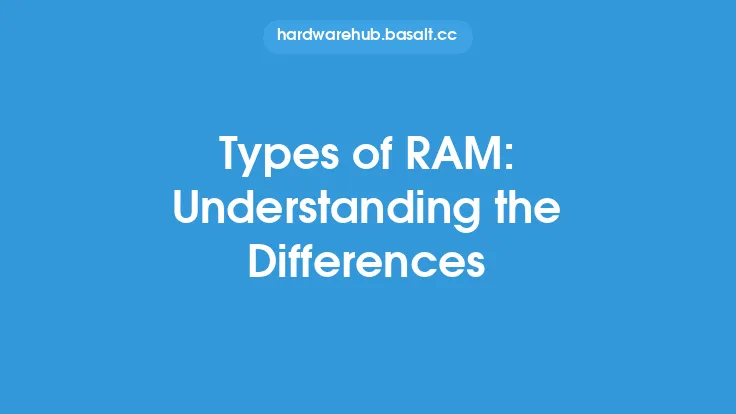When it comes to computer memory, two key factors that often get discussed are RAM speed and latency. While they are related, they are not the same thing, and understanding the difference between them is crucial for optimizing system performance. In this article, we'll delve into the world of RAM speed and latency, exploring what they mean, how they impact system performance, and what you need to know when choosing the right RAM for your system.
Introduction to RAM Speed
RAM speed, measured in MHz (megahertz), refers to the rate at which data is transferred between the RAM and the system's processor. It's a measure of how many data transfers can occur per second. A higher RAM speed means that more data can be transferred in a given time, which can improve system performance, especially in applications that rely heavily on memory bandwidth, such as video editing, 3D modeling, and gaming. RAM speed is often considered one of the key factors in determining the overall performance of a system, as it directly affects how quickly data can be accessed and processed.
Understanding RAM Latency
RAM latency, on the other hand, refers to the time it takes for the RAM to respond to a request for data. It's measured in clock cycles, and it's a critical factor in determining the overall performance of a system. Lower latency means that the RAM can respond more quickly to requests, which can improve system performance. There are several types of latency, including CAS (Column Address Strobe) latency, RAS (Row Address Strobe) latency, and command latency, each of which plays a role in determining the overall latency of the RAM. CAS latency, in particular, is a key factor, as it determines how long it takes for the RAM to respond to a request for data.
The Relationship Between RAM Speed and Latency
While RAM speed and latency are related, they are not directly correlated. It's possible to have high-speed RAM with high latency, or low-speed RAM with low latency. The key is to find a balance between the two. Generally, as RAM speed increases, latency tends to increase as well, as the RAM needs more time to respond to requests at higher speeds. However, some RAM modules are designed to optimize latency at the expense of speed, while others prioritize speed over latency. Understanding the trade-offs between RAM speed and latency is crucial for choosing the right RAM for your system.
Technical Aspects of RAM Speed and Latency
From a technical perspective, RAM speed and latency are determined by the RAM's timing parameters, which include CAS latency, RAS latency, and command latency, among others. These parameters determine how the RAM responds to requests for data and how quickly it can transfer data. The timing parameters are typically specified in the RAM's datasheet and are usually measured in clock cycles. For example, a RAM module with a CAS latency of 16 clock cycles will take longer to respond to a request for data than a module with a CAS latency of 12 clock cycles. Additionally, the RAM's speed grade, which is typically specified in MHz, determines the maximum data transfer rate of the RAM.
Choosing the Right RAM for Your System
When choosing the right RAM for your system, it's essential to consider both RAM speed and latency. For most users, a balance between the two is the best approach. If you're a gamer or video editor, you may prioritize high-speed RAM with low latency, while general users may be able to get by with lower-speed RAM and higher latency. It's also important to consider the system's processor and motherboard, as they may have specific requirements for RAM speed and latency. Additionally, it's crucial to ensure that the RAM is compatible with the system's architecture, whether it's DDR4, DDR5, or another type.
Conclusion
In conclusion, RAM speed and latency are two critical factors that determine the performance of a system. While they are related, they are not the same thing, and understanding the difference between them is crucial for optimizing system performance. By considering both RAM speed and latency, you can choose the right RAM for your system and ensure that it runs smoothly and efficiently. Whether you're a gamer, video editor, or general user, understanding the technical aspects of RAM speed and latency can help you make informed decisions when it comes to upgrading or building a new system.





